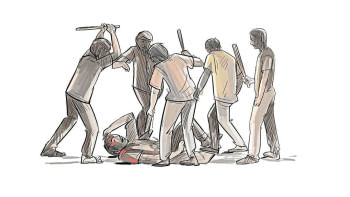Cyclone victims suffer in silence
Apart from the sound of children crying, the town of Labutta is strangely silent.
Traumatised by the ordeal of surviving Cyclone Nargis, few people have anything to say. But it is also fear bred by 46 years of repression by military regimes that keeps them quiet.
Although overwhelmed by the worst disaster in Myanmar's recent history, the junta has turned down foreign help and insists on using its ragtag infrastructure and poorly equipped military to conduct a grossly mismanaged relief operation for some 2 million people in distress.
And no one dares to protest. Few survivors wanted to speak to an outsider, as military trucks drove constantly through the town. Most cowered in corners.
On the outskirts of Labutta, 12 people were crammed into one tent pitched on a rice field. They were the only survivors from the village of Pain Na Kon and had fruitlessly searched Labutta for family members.
"We are family now. We are from the same place. We are together," said U Nyo, one of the survivors, his eyes red from tears and fatigue. "We need food. There isn't enough space in the town so we decided to stay here."
Aid agencies are also cautious.
"There are certainly parameters around whatever we do. It is very sensitive politically, but within those parameters we are getting through," said Tim Costello of World Vision in Yangon, one of the few foreign aid workers allowed in.
Aid workers said critical supplies were reaching Labutta, a town of 20,000 people whose population more than doubled with 30,000 refugees streaming in from dozens of surrounding villages devastated by the May 3 cyclone.
But efforts to rush food and medicine from Labutta to lower-lying parts of the delta that were hardest hit have been slowed by the military's intense micromanaging.

 For all latest news, follow The Daily Star's Google News channel.
For all latest news, follow The Daily Star's Google News channel. 



Comments